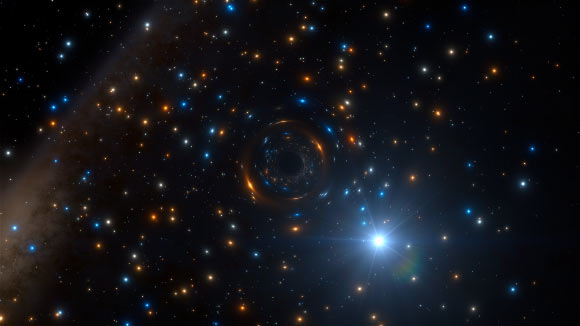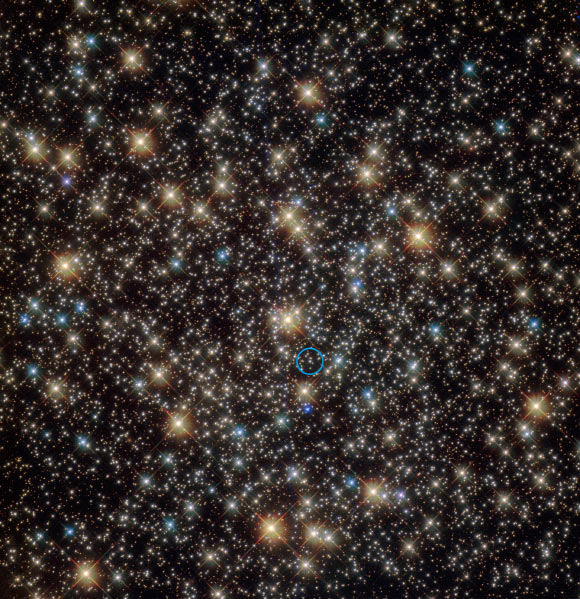An international team of astronomers led by Georg-August-Universität Göttingen researcher Benjamin Giesers has discovered a star in the globular cluster NGC 3201 that is behaving very strangely. The star appears to be orbiting an inactive black hole with a minimum mass of 4.36 solar masses. A paper describing the discovery is published in the Monthly Notices of the Royal Astronomical Society (arXiv.org preprint).

Artist’s impression of the black hole-star system in NGC 3201, a globular cluster located approximately 16,300 light-years away towards the southern constellation Vela. Image credit: ESO / L. Calçada / Spaceengine.org.
Globular star clusters are huge spheres of tens of thousands of stars that orbit most galaxies.
They are among the oldest known stellar systems in the Universe and date back to near the beginning of galaxy growth and evolution. More than 150 are currently known to belong to our Milky Way Galaxy.
One particular cluster, called NGC 3201, has now been studied using the Multi Unit Spectroscopic Explorer (MUSE) instrument on ESO’s Very Large Telescope in Chile.
Dr. Giesers and co-authors have found that one of NGC 3201’s stars is behaving very oddly — it is being flung backwards and forwards at speeds of several hundred thousand mph, with the pattern repeating every 167 days.
“It was orbiting something that was completely invisible — this could only be a black hole,” Dr. Giesers said.
“The first one found in a globular cluster by directly observing its gravitational pull.”

This Hubble image shows the central region of the globular star cluster NGC 3201. A star that has been found to be orbiting a stellar-mass black hole is indicated with blue circle. Image credit: NASA / ESA.
From its observed properties the star was determined to be about 0.8 times the mass of our Sun, and the mass of the black hole was calculated at around 4.36 times the Sun’s mass.
Recent detections of radio and X-ray sources in globular clusters, as well as the 2016 detection of gravitational-wave signals produced by the merging of two stellar-mass black holes, suggest that these relatively small black holes may be more common in globular clusters than previously thought.
“Until recently, it was assumed that almost all black holes would disappear from globular clusters after a short time and that systems like this should not even exist,” Dr. Giesers said.
“But clearly this is not the case — our discovery is the first direct detection of the gravitational effects of a stellar-mass black hole in a globular cluster.”
“This finding helps in understanding the formation of globular clusters and the evolution of black holes and binary systems — vital in the context of understanding gravitational wave sources.”
_____
Benjamin Giesers et al. 2018. A detached stellar-mass black hole candidate in the globular cluster NGC 3201. MNRASL 475 (1): L15-L19; doi: 10.1093/mnrasl/slx203







